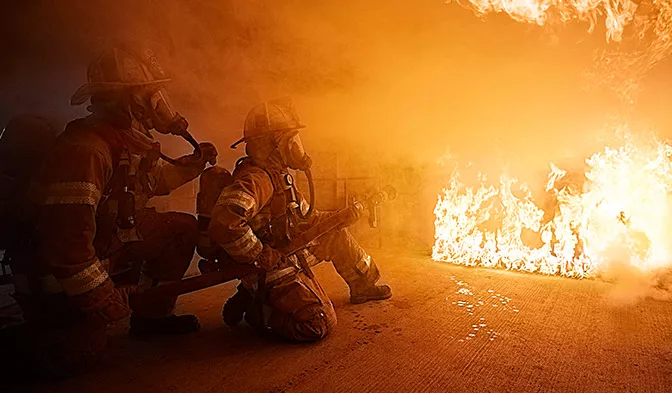|
This article explores and seeks to educate stunt performers about the fire resistance/flammability of various types of fabrics used in clothing and which fabrics are the best to wear for fire protection: IMPORTANT: This article does not teach you all you need to know about fire stunts and fire protection, and doesn't cover stunt / cold gels or different types of accelerants. Never attempt a fire stunt until you have passed a Fire Stunt Safety Certificate at a school like the ISA or its partners.
Stunt performers are often required to perform dangerous stunts involving fire. This means that they need to be protected from the heat and flames that come with these types of stunts. One of the most important things that stunt performers can do to protect themselves is to wear the right type of clothing. There are many different types of fabrics that are used in clothing, and not all of them are suitable for fire protection. Some fabrics are more flammable than others, and can easily catch fire and cause serious injuries. Seriously cool - must wear fabrics! Here are some of the best fabrics to wear for fire protection:
Seriously not cool! (Avoid at all costs) While there are many fabrics that are suitable for fire protection, there are also fabrics that should be avoided at all costs. These fabrics are highly flammable and can easily catch fire, causing serious injuries to the wearer. Here are some of the worst fabrics to wear for fire protection:
ALWAYS READ THE LABEL. If you are unsure, don't risk it. Even if you believe you can assess the construction of a fabric there is often a been or mix of other fibres added in. We would advise always holding a lighter to a material for a while so you can see how it behaves, you'd be surprised how often things like wool will suddenly burn and melt due to polyester being added. Comments are closed.
|
AuthorThis blog os co-authored by The ISA Team Archives
June 2024
Categories
All
|


 RSS Feed
RSS Feed

12/19/2022